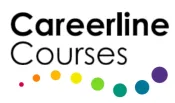This Bookkeeping Applications course has a stronger focus on “trading businesses” than Bookkeeping Foundations; and in many ways complements and adds to topics not covered in Bookkeeping Foundations.
Trading businesses have a major asset which most service businesses do not. That asset, known as ‘stock’, ‘merchandise’ or ‘inventory’, is unique in character – it is acquired by the businesses for one purpose only – that is – selling to customers. Unlike other assets which are obtained and retained by a business, a trading business must rely for its survival on the constant sale of this asset. Because of this, trading businesses need to be able to account for this asset and the individual lines of merchandise which make it up.
Take into consideration advantage of the saving available through doing Bookkeeping A and B and round out your knowledge for the requirements of your own business, your consultancy, or your career.
Course Aims:
- Describe the nature of trading businesses, and the differences between recording and reporting for trading businesses and service businesses.
- Describe the nature of stock and the physical system of recording inventory.
- Explain the perpetual or continuous system of recording for inventory, the use of stock cards and methods of stock valuation.
- Distinguish between the main methods for valuing merchandise on hand and the procedures that need to be set up in order to maintain the different systems.
- Distinguish between bad debts and doubtful debts
- Explain how to prepare the journal entries and understand the effect of bad debts on final accounting reports.
- Extend your knowledge of the classification in accounting reports and how it is applied to trading firms.
- Acquire an understanding of control accounts and their uses.
- Explain of the use of budgets and to apply the skills learned.
- Explain the use and role played by statements of cash flows.
- Explain the different accounting alternatives available to business and the advantages and disadvantages of the various alternatives.
- Describe the tools used to measure the key areas of performance and financial position of a business and how they can aid in decision making.
- Describe the different sources of finance available to businesses, other methods of expanding a business and the impact of different equity structures on the accounting and decision making processes.
Detailed Course Outline
This Bookkeeping Applications course is made up of a number of lessons or units. Each of these has self assessment questions, a set task (practical homework) and an assignment which you can upload online.
There are 10 lessons in this course:
1. Introduction – Review of Accounting Foundations
2. Decision Making – How to Manage The Books for Specific Business Needs
3. Managing Cash Flow, Obtaining Finance and Managing Bad Debts
4. Managing the Inventory Part 1
5. Managing the Inventory Part 2
6. Establishing and Managing Control Accounts
7. Budgeting Part 1
8. Budgeting Part 2
9. Payroll; PAYG Taxation
10. Financial Statement Analysis
When you have completed the lessons of your Certificate course, you will be given the option of taking the optional exam. It’s okay if you don’t want the exam, we still issue your Careerline Certificate. For Advanced Certificates however, the exam is compulsory (per module) and are included in the course fee.

